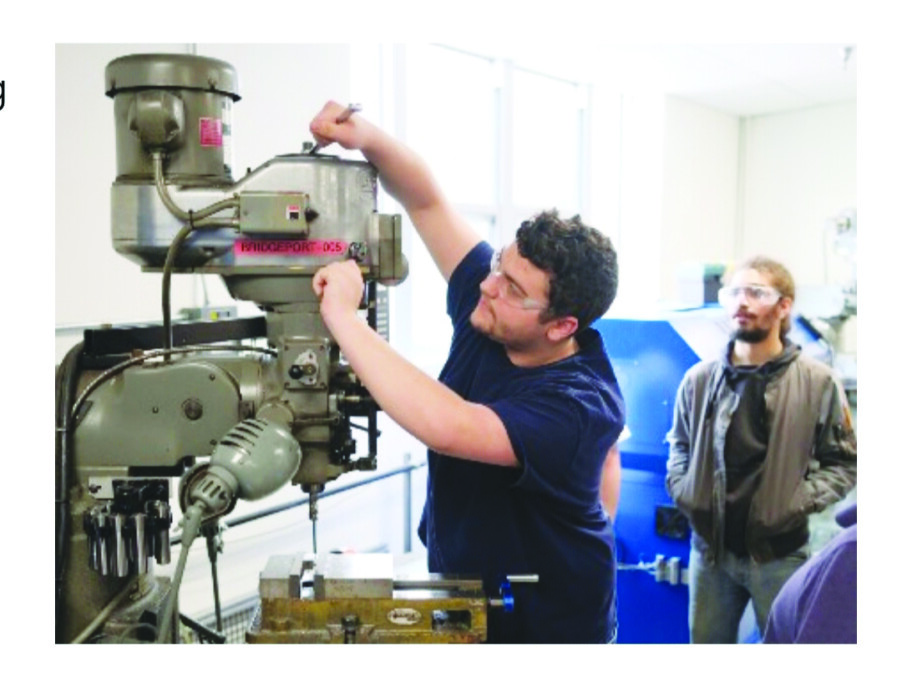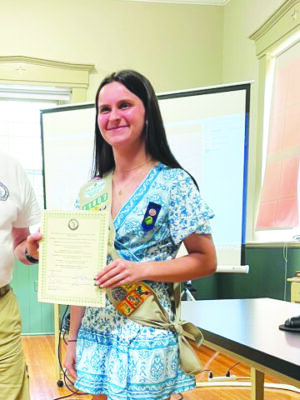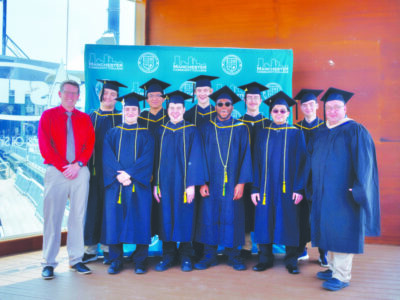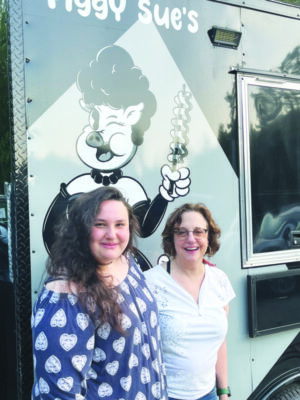On leaving high school with an associate degree
Spark Academy of Advanced Technologies, a chartered public high school located at Manchester Community College, recently celebrated its inaugural graduating class of nine students, who obtained both their high school diplomas and associate degrees simultaneously. One of these graduates, Caleb Smith of Manchester, shared his experiences at Spark and discussed the promising career opportunities that await him and his peers.
Tell us about your journey toward choosing Spark Academy and what led you to pursue this alternative high school experience.
When I was in eighth grade … I saw an ad for Spark Academy at a Fisher Cats game. The ad mentioned new opportunities for students, so I attended an info night with my mother. We both loved what we saw. I was immediately interested when they said they could graduate students with an associate’s degree right out of high school.
What was the curriculum like?
Basically, instead of taking traditional high school classes, we took college classes as dual enrollment — for both college and high school credits. … During the first two years, we were strictly at Spark Academy and took college classes that the Spark teachers were trained to teach, like basic CAD, robotic design and electrical fundamentals. In the third year, we gained full access to the college and could choose our own classes. Some professors knew we were high school students, and some didn’t. … This also allowed for accelerated learning based on [each student’s] capabilities. For example, I took Calculus I for my math credit, while some of my classmates went up to Calculus IV or Differential Equations. … Some of the classes were challenging, but as long as I dedicated enough time to them, they were manageable.
What degrees and certificates did you graduate with?
I earned an associate’s degree in advanced manufacturing. I also got a certificate in mechatronics. Not many people know what that is; it’s an electronic and mechanical system that’s used to automate an entire process. It’s very important in today’s industry and manufacturing world, and a lot of companies value that degree or certificate. Over the summer, I’m also going to be finishing up my certificate in robotics, which covers operating, programming and building robots to automate tasks.
What career opportunities has this path opened for you right out of high school?
It opens up opportunities in the field of manufacturing. … As part of the Spark program, we took a class called Systems One, which acted as our senior project. We could choose between doing a comprehensive project or securing an internship. I got an internship at Summit Packaging Systems, and that has provided valuable job pathways and networking opportunities. I’m working there now in inspection but will soon move to the machine shop. I learned to use CNC machines, problem-solving skills and various technologies relevant to my current work while I was at Spark. There are all kinds of [workplaces] around here that are looking for these kinds of skills. Some of my classmates with the same degree are working as mechanical engineers at DEKA or operating machinery at General Electric.
Are you content with your high school experience, even though you may have missed out on certain traditional elements?
It’s true that with such a small class and a class that was predominantly male, we couldn’t really have a prom or dances and stuff. But one of the extracurriculars they offered was the chance to compete in VEX Robotics on a robotics team, and this year we made it to the World Championship and got to go to Dallas for that, and that was really cool. … Honestly, I’m extremely happy to be in the position I’m in right now. It’s been great being one of the first graduates of the founding class.
What guidance or advice would you offer to future classes or students who are considering attending Spark Academy?
If you’re on the edge and not sure if you want to go or not, definitely take the leap. Worse comes to worst, you don’t like it, and you can back out and go to a different school. And, if you don’t like the Advanced Manufacturing pathway after the second year, you can choose a different path for yourself that will still be giving you early access to college [curriculum and credits]
Featured photo: Caleb Smith. Courtesy photo.



























